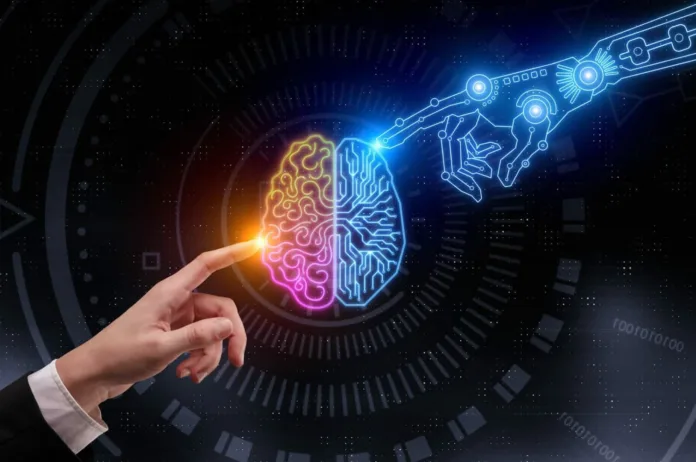
As artificial intelligence (AI) continues to evolve, its integration with human expertise is transforming how we work, think, and solve complex problems. Rather than replacing human labor, the next frontier lies in human-AI collaboration—a symbiotic partnership where machines amplify human capabilities and humans steer machine intelligence with ethical and contextual reasoning.
In the first wave of automation, AI systems often operated autonomously, executing specific tasks like data processing, image recognition, or predictive modeling with speed and accuracy. But now, industries are shifting focus from standalone systems to human-machine teaming, where machines and humans work together in real time, leveraging each other’s strengths for superior outcomes.
The Rise of Human-AI Collaboration
The concept of human-AI collaboration revolves around creating a mutual partnership between people and machines. Humans bring creativity, intuition, empathy, and ethical judgment—qualities that machines cannot replicate. On the other hand, AI offers rapid computation, pattern recognition, and data-driven insights that far exceed human capacity.
In a collaborative model, AI doesn’t replace workers—it augments them. This shift is redefining productivity across sectors such as healthcare, manufacturing, customer service, cybersecurity, and scientific research. The result is not just automation, but a new form of teamwork that blends machine efficiency with human wisdom.
Real-World Applications of Human-Machine Teaming
1. Healthcare Diagnostics
In medical imaging, AI algorithms can analyze X-rays, MRIs, or CT scans to detect abnormalities with high precision. However, doctors still play a vital role in interpreting the context, considering patient history, and making final treatment decisions. This AI-assisted decision-making process improves accuracy while retaining the human touch in healthcare.
2. Manufacturing and Robotics
Advanced manufacturing now uses collaborative automation, where robotic arms work alongside human operators on factory floors. AI systems handle repetitive or hazardous tasks, while humans supervise, guide adjustments, and manage quality assurance—enhancing safety and productivity simultaneously.
3. Cybersecurity
AI monitors vast networks in real-time, detecting potential breaches or anomalies. However, it’s human analysts who verify threats, investigate deeper issues, and determine appropriate responses. The AI-human synergy allows for faster threat detection and smarter incident resolution.
4. Creative Industries
AI is increasingly used in music composition, video editing, and even writing. But the final output still depends heavily on human creativity, storytelling, and emotional impact. AI tools serve as creative assistants rather than creators—examples of augmented intelligence in the arts.
Key Benefits of Human-AI Collaboration
Faster, Smarter Decisions
AI can process large volumes of data in seconds, helping humans make quicker, more informed decisions. Whether it’s financial analysis, logistics optimization, or resource management, human-AI collaboration enables agility and accuracy.
Enhanced Safety
By handling high-risk tasks in fields like construction, mining, or defense, machines reduce human exposure to danger. Meanwhile, humans guide the machines with ethical constraints and situational awareness.
Scalability and Efficiency
Automating routine operations while empowering human oversight leads to massive gains in scalability. Teams can manage larger operations with fewer errors and better resource allocation.
Continuous Learning
Humans train AI systems, and in turn, AI systems support human learning by providing real-time feedback, recommendations, and performance analytics.
Challenges and Considerations
While the advantages are clear, successful human-machine teaming also demands careful planning and ethical awareness:
Transparency: Users must understand how AI makes decisions to build trust.
Bias Mitigation: AI systems should be trained with diverse, unbiased data to ensure fairness.
Skill Development: Workers need training to interact with AI tools effectively.
Human-Centered Design: Interfaces should prioritize usability and human needs.
By focusing on human-centered AI, designers and developers can ensure that the technology empowers rather than overwhelms its users.
The Future of Human-Machine Teaming
As industries move toward AI-integrated workplaces, the goal is not full automation but optimal integration. We’re heading toward an era where human-AI collaboration is the norm—a relationship built on trust, shared goals, and complementary capabilities.
Emerging technologies like brain-computer interfaces, adaptive learning systems, and emotionally intelligent AI will further deepen this collaboration, making machines more responsive to human needs and preferences.
In this future, humans and machines won’t compete—they will co-create.
Conclusion
Human-AI collaboration is not a distant concept—it’s already shaping the way we work and innovate. By merging the strengths of humans and machines through augmented intelligence, collaborative automation, and AI-assisted decision-making, we can unlock a new paradigm of productivity, safety, and creativity.
Organizations that embrace this partnership, invest in training, and focus on ethical integration will lead the next wave of digital transformation.